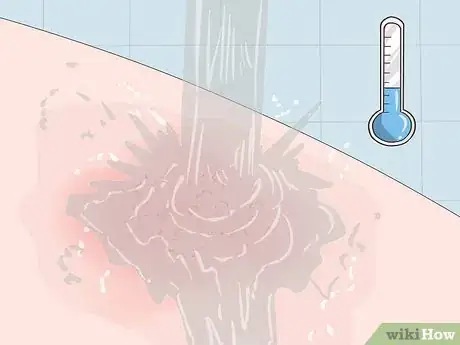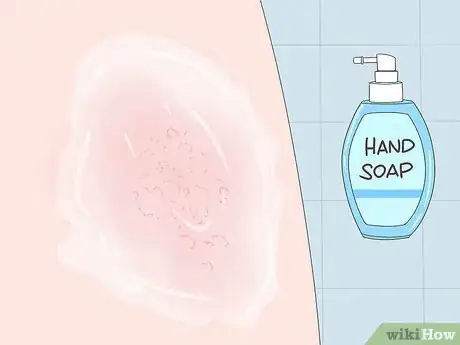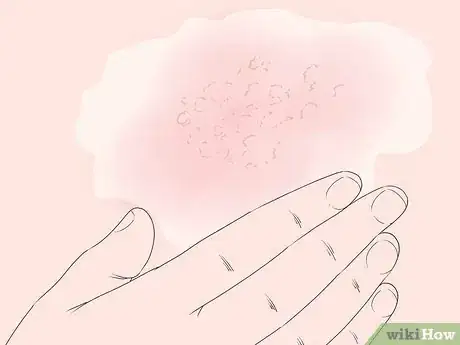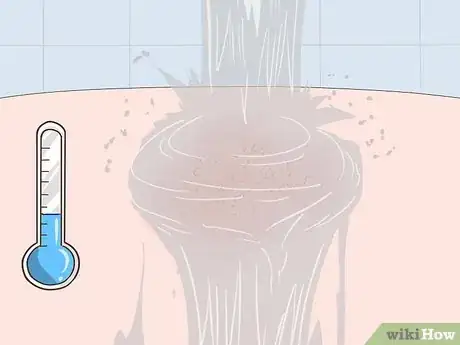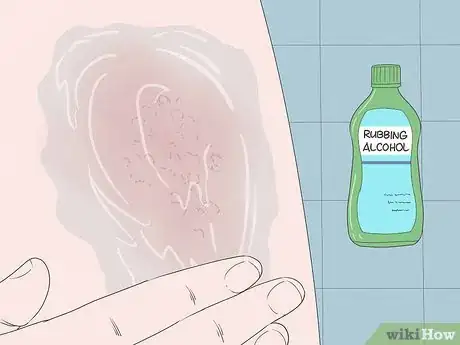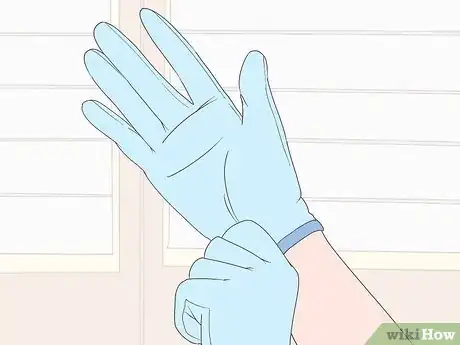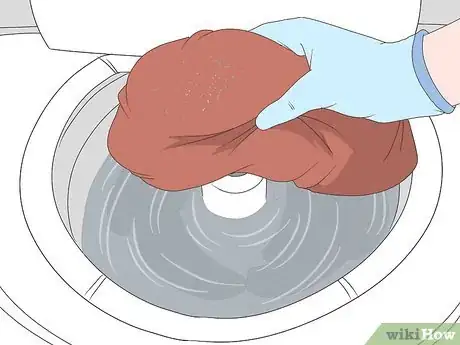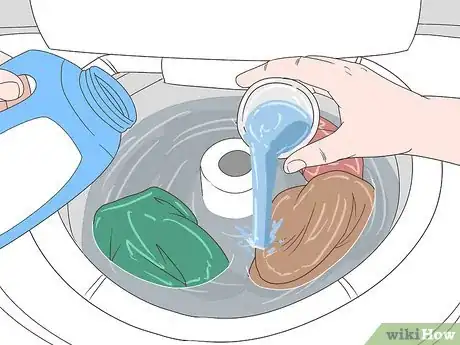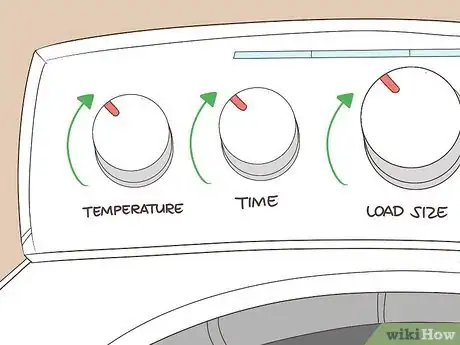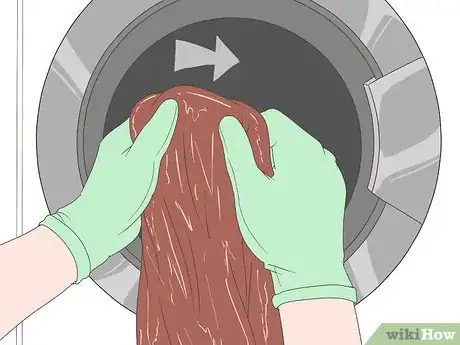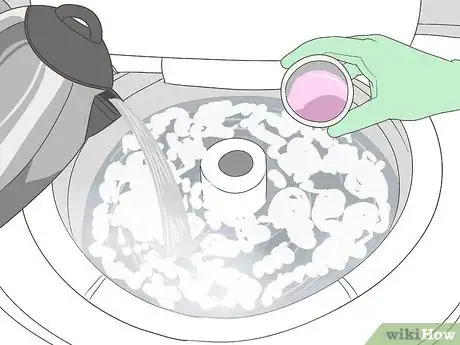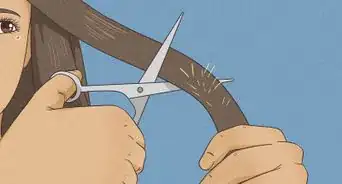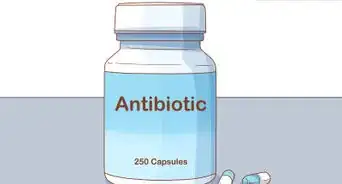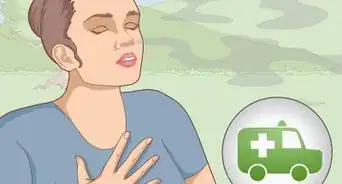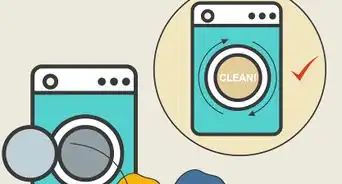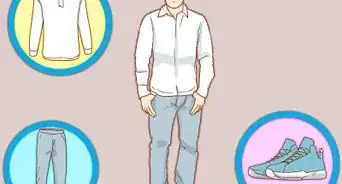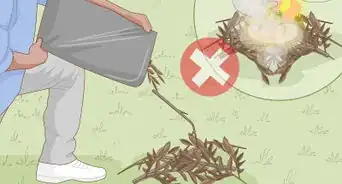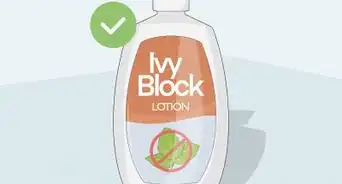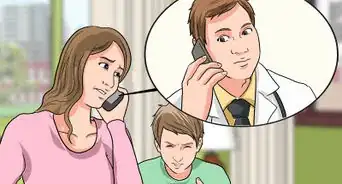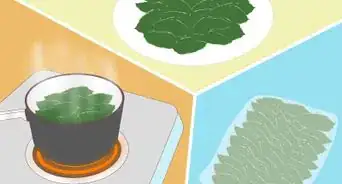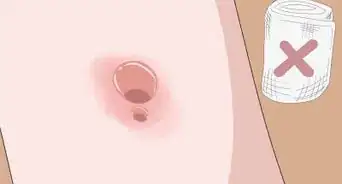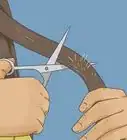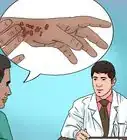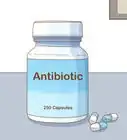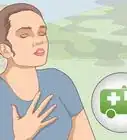This article was co-authored by Alan O. Khadavi, MD, FACAAI and by wikiHow staff writer, Jessica Gibson. Dr. Alan O. Khadavi is a Board Certified Allergist and a Pediatric Allergy Specialist based in Los Angeles, California. He holds a BS in biochemistry from the State University of New York (SUNY) at Stony Brook and an MD from the State University of New York Health Science Center at Brooklyn. Dr. Khadavi completed his pediatric residency at Schneider Children’s Hospital in New York, and then went on to complete his allergy and immunology fellowship and pediatric residency at Long Island College Hospital. He is board certified in adult and pediatric allergy/immunology. Dr. Khadavi is a Diplomate of the American Board of Allergy and Immunology, a Fellow of the American College of Allergy, Asthma & Immunology (ACAAI), and a member of the American Academy of Allergy, Asthma & Immunology (AAAAI). Dr. Khadavi's honors include Castle Connolly’s list of Top Doctors 2013-2020, and Patient Choice Awards "Most Compassionate Doctor" in 2013 & 2014.
This article has been viewed 18,486 times.
By the time you've spotted poison ivy on a trail, you've probably already been exposed to urushiol, the plant's rash-causing oil. If you suspect you've touched the plant or brushed your clothing against it, it's important to completely wash your skin and clothes so your skin doesn't react and develop an itchy rash. Use soapy water or rubbing alcohol to eliminate the oil and prevent you from spreading poison ivy to others.
Steps
Washing Poison Ivy from Your Skin
-
1Rinse poison ivy-exposed skin with cold water. Get to a restroom and run cold water over the skin. If you're still on a trail, pour water from a water bottle or canteen over it. You could even dip your skin into a cool stream if you don't have a container of water handy.[1]
Tip: Using hot water to rinse can actually spread the urushiol, which is why you should use cold water.
-
2Apply soap to your skin. You could use a bar of soap, liquid hand soap, or liquid dishwashing soap. Squirt a few drops of liquid soap on your skin or rub the bar over your skin until it's coat in a thin layer of soap.[2]
- Soap strips oil from your skin, so it's effective at removing the urushiol.
Advertisement -
3Massage the soap into your skin until it lathers. Gently rub the soap into your skin so it foams. If you're washing your hands, ensure that you rub between your fingers and under your nails.[3]
- Avoid scrubbing hard when you wash or you could irritate the skin.
-
4Wash the soap off of your skin using cool water. Hold the soapy skin under cool running water to completely remove the soap. You'll rinse the urushiol oil off of your skin as you rinse off the soap.[4]
- Remember to use cool water so you don't irritate sensitive skin.
-
5Wash your skin with rubbing alcohol if you don't have access to soap. You might find yourself on a trail without access to soap, but if you have rubbing alcohol in your first aid kit, you could use that. Pour the rubbing alcohol onto poison ivy-exposed skin and gently rub your skin to loosen the urushiol.[5]
- Be sure to rinse the rubbing alcohol off with cool water.
Removing Poison Ivy from Clothing
-
1Wear vinyl or cotton gloves to handle the clothes. If your clothes or shoes have brushed against poison ivy, the urushiol oil might have transferred to the items. Since urushiol can stay on clothing for years, it's important to effectively clean the materials. Put on a pair of vinyl or cotton gloves so your bare skin doesn't come into contact with the oil again.[6]
- Avoid using thin rubber or latex gloves, because urushiol can get through these materials.
Tip: Use gloves that you don't mind throwing away since you'll need to discard them after they come into contact with the oil.
-
2Put the contaminated clothing into the washing machine. Don't add clothes that weren't exposed to poison ivy into the machine. Combining the clothes could transfer urushiol oil to the unexposed clothing. Instead, put only the poison ivy-exposed clothes into your machine. Then, discard the gloves you wore when you handled the clothes.[7]
- If you can't wash the poison-ivy exposed clothes right away, wear gloves to put the clothes into a plastic trash bag. Once you empty the clothes into the washing machine, discard the bag.
-
3Add a full scoop of laundry detergent. Poison ivy is difficult to wash out, so put a full scoop of powdered laundry detergent in with the clothes even if you're only washing a few articles of clothing. The detergent will mix with the full tub of water to create a powerful solution.[8]
- If you use liquid detergent, add a whole capful to the load.
-
4Run the machine on the hottest, largest, and longest cycle settings. Poison ivy's oil doesn't break up easily in water, so fill your machine full of hot water and set it to run for the longest cycle. This gives the soapy solution the best chance to wash off the urushiol oil.[9]
- If you have the option, select a deep-fill rinse to remove the urushiol oil and prevent it from redepositing on the clothes.
- To wash a large amount of contaminated clothing, divide them into small loads. Smaller loads agitate the clothing better and ensure that the urushiol oil rinses off.
-
5Wear new gloves to transfer the clothes to the dryer. Although the urushiol should be off of the clothing, it doesn't hurt to wear a new pair of vinyl or cotton gloves to transfer the wet clothes to the dryer. Run the dryer on whichever setting you usually use.[10]
- Remember to discard the gloves after using them.
-
6Run a hot, soapy cycle through your empty washing machine. To remove residual urushiol oil, fill the machine with hot water and add a full cap or scoop of laundry detergent. Turn the machine on and run a long cycle.
- Do this before washing uncontaminated clothes in the machine.
Expert Q&A
-
QuestionHow do you treat a poison ivy rash?
 Alan O. Khadavi, MD, FACAAIDr. Alan O. Khadavi is a Board Certified Allergist and a Pediatric Allergy Specialist based in Los Angeles, California. He holds a BS in biochemistry from the State University of New York (SUNY) at Stony Brook and an MD from the State University of New York Health Science Center at Brooklyn. Dr. Khadavi completed his pediatric residency at Schneider Children’s Hospital in New York, and then went on to complete his allergy and immunology fellowship and pediatric residency at Long Island College Hospital. He is board certified in adult and pediatric allergy/immunology. Dr. Khadavi is a Diplomate of the American Board of Allergy and Immunology, a Fellow of the American College of Allergy, Asthma & Immunology (ACAAI), and a member of the American Academy of Allergy, Asthma & Immunology (AAAAI). Dr. Khadavi's honors include Castle Connolly’s list of Top Doctors 2013-2020, and Patient Choice Awards "Most Compassionate Doctor" in 2013 & 2014.
Alan O. Khadavi, MD, FACAAIDr. Alan O. Khadavi is a Board Certified Allergist and a Pediatric Allergy Specialist based in Los Angeles, California. He holds a BS in biochemistry from the State University of New York (SUNY) at Stony Brook and an MD from the State University of New York Health Science Center at Brooklyn. Dr. Khadavi completed his pediatric residency at Schneider Children’s Hospital in New York, and then went on to complete his allergy and immunology fellowship and pediatric residency at Long Island College Hospital. He is board certified in adult and pediatric allergy/immunology. Dr. Khadavi is a Diplomate of the American Board of Allergy and Immunology, a Fellow of the American College of Allergy, Asthma & Immunology (ACAAI), and a member of the American Academy of Allergy, Asthma & Immunology (AAAAI). Dr. Khadavi's honors include Castle Connolly’s list of Top Doctors 2013-2020, and Patient Choice Awards "Most Compassionate Doctor" in 2013 & 2014.
Board Certified Allergist Put a steroid cream on it if it's very itchy and blistering. You can start with over-the-counter creams, but if it's very severe, you can use prescription steroid creams as well. Calamine lotion will also help with the itching, along with an oral antihistamine, like Benadryl or Claritin.
Put a steroid cream on it if it's very itchy and blistering. You can start with over-the-counter creams, but if it's very severe, you can use prescription steroid creams as well. Calamine lotion will also help with the itching, along with an oral antihistamine, like Benadryl or Claritin.
Warnings
- Call your doctor if you get a poison ivy rash that's so itchy that it keeps you awake at night or if it gets worse. Get immediate medical attention if you also develop a fever, notice swelling, or have trouble breathing.[11]⧼thumbs_response⧽
Things You'll Need
- Soap
- Water
- Rubbing alcohol
- Laundry detergent
- Vinyl or cotton gloves
References
- ↑ https://www.drugs.com/cg/poison-ivy.html
- ↑ https://www.fda.gov/consumers/consumer-updates/outsmarting-poison-ivy-and-other-poisonous-plants
- ↑ https://youtu.be/SHR43TRs6rY?t=136
- ↑ https://www.fda.gov/consumers/consumer-updates/outsmarting-poison-ivy-and-other-poisonous-plants
- ↑ https://www.uofmhealth.org/health-library/hw75002
- ↑ https://www.uofmhealth.org/health-library/hw75002
- ↑ https://ohioline.osu.edu/factsheet/aex-892237
- ↑ https://ohioline.osu.edu/factsheet/aex-892237
- ↑ https://ohioline.osu.edu/factsheet/aex-892237
